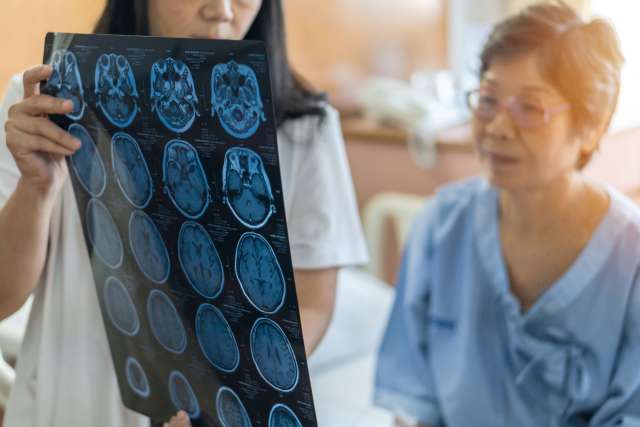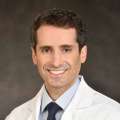Although stroke is the third-leading cause of death among women in the United States, Dr. Sharma notes that the symptoms can be subtle and are more likely to be missed or minimized by women than men.
Emergency treatment for stroke is essential to save lives and preserve function, but follow-up care is vital to ensure the fullest possible recovery. “Stroke patients need to be seen over time after the acute event,” says David Liebeskind, MD, director of the UCLA Stroke Center. At UCLA, “we develop ongoing partnerships with community physicians to provide expertise and ensure that their patients receive the long-term follow-up that will optimize outcomes.”
The UCL A Stroke Center provides comprehensive diagnostic and therapeutic care for simple and complex vascular disorders through multidisciplinary teams that work closely with patients and their referring physicians. “We offer the expertise not just of individuals, but of our center as a whole,” says UCLA neurosurgeon Geoffrey Colby, MD, PhD. “A good part of the success of the procedures we perform comes from the care that’s provided before and after, through the immediate recovery period and beyond.”
In many cases, it pays not to wait for an acute event. For example, when a patient is found to have a condition k nown as intracranial atherosclerotic disease (ICAD) — narrowing of the large vessels of the arteries leading to the brain, putting them at risk for stroke — early referral to an expert center is important, in part because the best course of therapy isn’t always clear.
The center’s neurosurgeons treat patients with complex vascular lesions, often using revascularization to avert ischemia and then following patients at all stages of the disease. One example of this approach is for Moyamoya disease, a rare, progressive cerebrovascular condition that is one of the primary causes of stroke in children and young adults. “These are usually young people, and often children, who are seemingly healthy; then they suffer a stroke and are at high risk for strokes in the future,” says neurosurgeon Anthony Wang, MD, who specializes in cerebrovascular, pediatric and complex cranial-base surgeries. “Our goal is to correct the chronic lack of oxygenation to the brain and prevent that damage from occurring for the rest of that individual’s life.”
The UCLA Stroke Center stands apart with its expertise in treatment of children. “It can be challenging to recognize the signs of stroke in children, as the overall incidence is low and the clinical signs can be nonspecific, particularly in infants,” says neurologist Latisha Sharma, MD. Once the acute care is completed, access to a team with a multifaceted approach to outpatient treatment of the child plays an essential role in his or her recovery, Dr. Sharma says.
Although stroke is the third-leading cause of death among women in the United States, Dr. Sharma notes that the symptoms can be subtle and are more likely to be missed or minimized by women than men. “We need to do more to educate women to call 911 and not delay seeking treatment, especially if there is a sudden neurological change,” she says. Women may be at higher stroke risk in the antenatal and postpartum period from conditions such as preeclampsia. “Preeclampsia is considered a sexspecific risk factor for future stroke but is often under-recognized and many women are unaware of their risk later in life,” Dr. Sharma adds.



